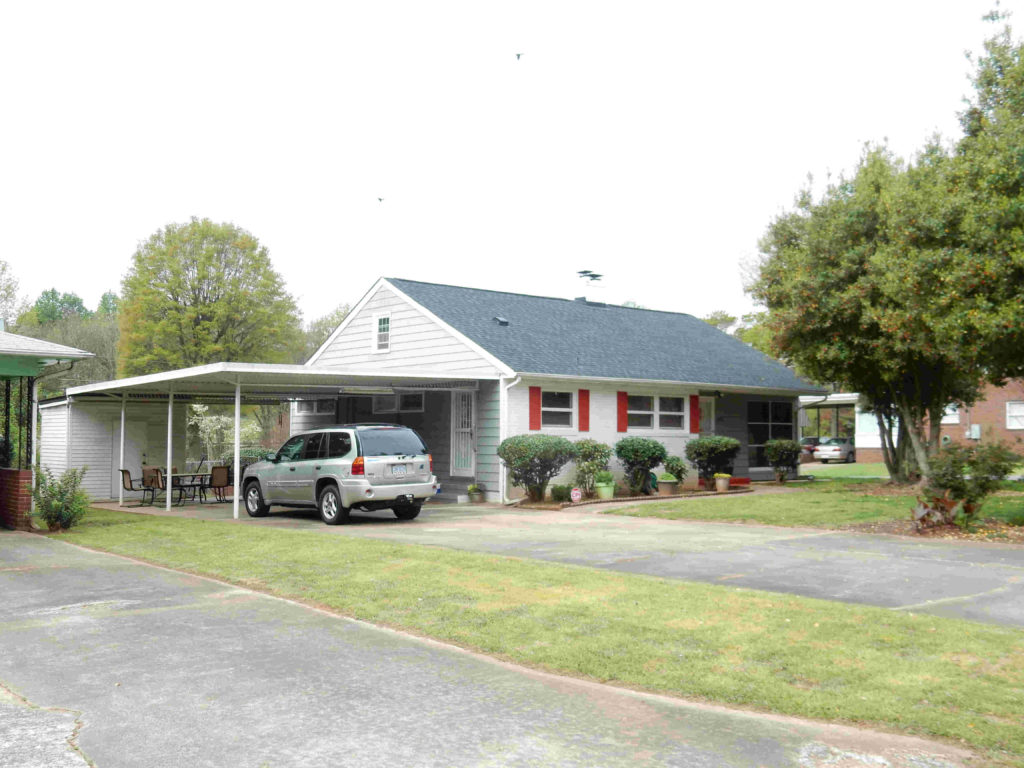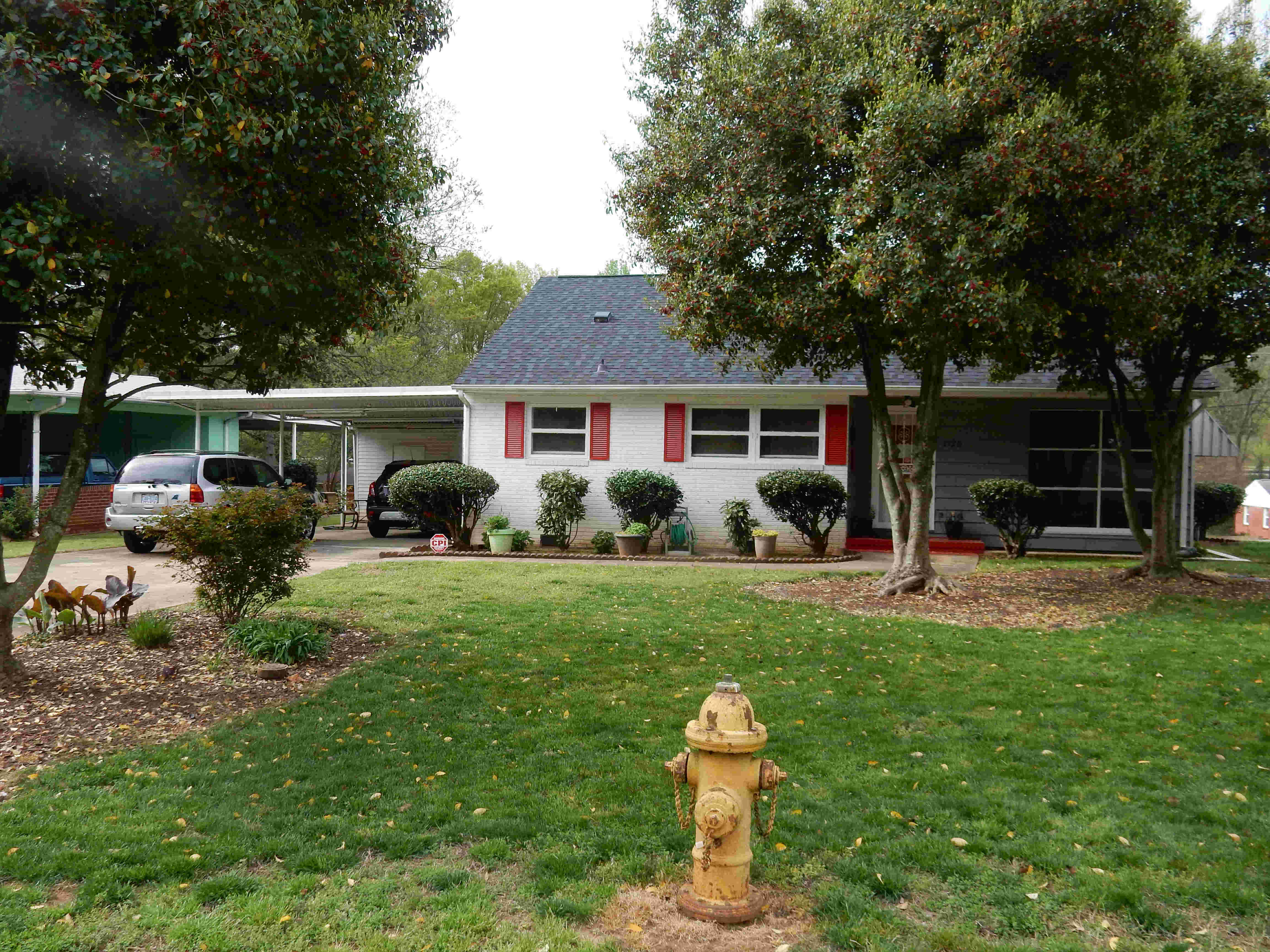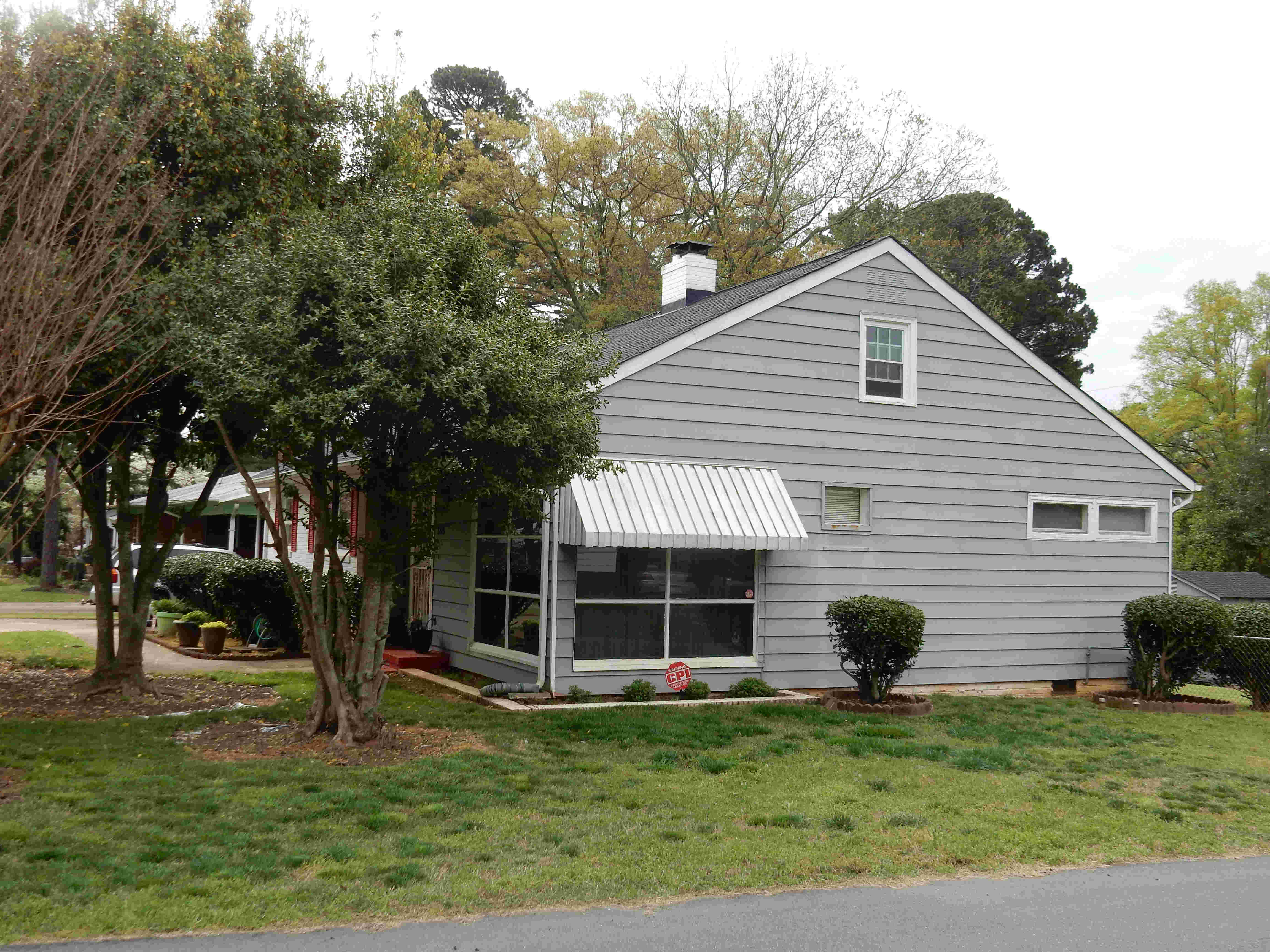1725 Madison Avenue
 Built 1952 – 53 by Walter W. Twitty, Charlotte representative of the black-owned North Carolina Mutual Insurance Company, and his wife Samella, a longtime teacher in Charlotte’s public schools. Mr. Twitty ranked among the city’s most important black economic leaders. He worked to open opportunities in the wider society during the Civil Rights era, including taking part in one of the South’s earliest sit-ins in 1954 which desegregated Charlotte’s airport.
Built 1952 – 53 by Walter W. Twitty, Charlotte representative of the black-owned North Carolina Mutual Insurance Company, and his wife Samella, a longtime teacher in Charlotte’s public schools. Mr. Twitty ranked among the city’s most important black economic leaders. He worked to open opportunities in the wider society during the Civil Rights era, including taking part in one of the South’s earliest sit-ins in 1954 which desegregated Charlotte’s airport.
* * *
Walter Whitman Twitty, Sr. (8.9.1915 – 8.19.2006) grew up in Rutherford County, west of Charlotte on the way to Asheville, and made his way to the big city to attend Johnson C. Smith University. His name likely honored the great American poet Walt Whitman, but he preferred be known as W.W., brisk and efficient sounding. People liked him; in 1939 he was crowned King of Asheville’s annual Rhododendron Festival, a celebration that drew participants from black colleges throughout the Carolinas, Virginia and Tennessee.
In 1939 he joined North Carolina Mutual Insurance, one of the best possible jobs for young man on the rise. North Carolina Mutual was often cited as the largest black-owned financial institution in America, headquartered on the “Black Wall Street” of Durham, North Carolina.
Just as his career was getting underway the United States entered World War II. The Army drafted W.W. Twitty in 1942 and he served for the duration of the conflict, until 1946. Before he shipped out, however, he married his sweetheart Samella “Sammie” Brown (3.16.1917 – 3.15.2009). She was a Charlotte girl, daughter of railroad switchman/brakeman Samuel Burris Brown. She had earned a degree in education at highly respected Bennett College in Greensboro and would go on to attain a Masters from Columbia University in New York in 1950. W.W. caught Sammie’s eye at a dance, “even though he had two left feet,” she remembered, the beginning of a 63 year friendship. They raised daughter Marilyn Twitty and son W.W. Twitty, Jr. in this house on Madison Avenue, while Mrs. Twitty taught in Charlotte elementary schools.
As the 1950s rolled on, Mr. Twitty moved up through the ranks at North Carolina Mutual (NCM) under the watchful eye of the company’s Charlotte executive E.A. Spears, a McCrorey Heights neighbor. The company named Twitty its Debit Manager of the Year in 1954, Staff Manager of the Year in 1960. It would eventually send him to help lead the office in Wilmington, NC, and to pioneer a new office out in Los Angeles. But always he kept returning to the family home in McCrorey Heights. In 1968 the Mutual put him in its top Charlotte post, District Manager, where he would stay until retirement in 1980.
Success in the business world can lead to a conservative outlook, an unwillingness to take chances that might jeopardize social standing. Not so for W.W. Twitty. On July 10, 1954 Charlotte proudly opened a new airport terminal. The federal government funded construction and the facility was for “interstate transportation” — which a 1946 Supreme Court ruling said must serve all customers regardless of race. But Charlotte being a Southern city, local administrators barred African Americans from the terminal’s restaurant. Frequent activists Dr. Reginald Hawkins, a dentist, and Thomas Wyche, an attorney — both residents of McCrorey Heights — decided to mount a challenge. They brought along a pair of McCrorey Heights neighbors, insurance agent W.W. Twitty and Civil Rights attorney Charles V. Bell and drove out to the airport where they boldly broke the law, sitting and asking to be served. This very early use of the “sit-in” tactic led to a lawsuit that succeeded in desegregating the Charlotte airport.
Twitty seldom went looking for controversy, as his notable neighbor Dr. Hawkins loved to do. But the insurance executive did not shy away from involvement. When college students launched sit-ins at area lunch counters in 1960, Twitty put his staff to work. “We hauled the students back and forth. My agents and me. We had cars so we would take them down there,” he said simply when interviewed by Duke University’s “Behind the Veil” oral history project. Later, when North Carolina’s U.S. Senator B. Everett Jordan, known for his opposition to school busing for racial equality, visited Charlotte to court black leaders during a 1972 re-election campaign, Twitty told reporters afterward that Jordan “has bypassed blacks in other elections and is reaching for straws now.”
Mr. and Mrs. Twitty loved community life. He served on the boards of Johnson C. Smith University and the black McCrorey YMCA. When Civil Rights barriers began to fall in public life, he was named to the Charlotte Mecklenburg Park and Recreation Commission and in 1973 North Carolina Governor James Holshouser appointed him to the State Board of Conservation and Development. In his young days he became part of the Swanks, a social group of half a dozen JCSU students who went on to activism in Civil Rights, including school principal Gerson Stroud, attorney Thomas Wyche and Ray Booton, who would become Charlotte’s first black policeman. Wife Samella joined a similar life-long social group of women, the Modernettes. Together the couple enjoyed a passion for bridge, the card game that was so popular in McCrorey Heights and other upscale black neighborhoods across the nation. They helped make the Metrolina Bridge Club an African American social organization valued not just in Charlotte but across the South for its frequent tournament gatherings.
Mr. and Mrs. Twitty lived into their 90s. Their daughter Marilyn Twitty Brown resided in the house after their passing.



Architecture
An early example of the modernistic Ranch style, one-story tall under a gable roof. Siding is wooden clapboard, unusual in McCrorey Heights where most houses are brick. Windows are wider than they are tall, giving the house a horizontality that is characteristic of the Ranch style. Especially note the high, small “strip windows” at the rear and west side, and also the inset screened porch at the front west corner, both motifs that were at the architectural forefront in the early 1950s. The Twitty family remembers that the design came from a magazine. It was built by Mangie McQueen, a longtime McCrorey Heights resident who was one of the busiest African American building contractors in Charlotte.
In 1967 the Twitty family took out a building permit to add aluminum siding, an early example of that material. In 1972 they took out another permit to add the two-vehicle carport, its flat roof and metal columns nicely matching the modernistic spirit of the original dwelling.
The house sits on a prominent corner lot, its front facing Madison Avenue and its side facing Fairfield Avenue.
Building permits
Madison-1725-permit-c
Date issued: April 11, 1952
Owner: Walter W. Twitty
Contractor: Mangie McQueen
Estimated cost:
Other permit info: Build residence
Madison 1725 permit b
Date issued: December 4, 1967
Owner: Walter Twitty
Contractor: Piedmont Pacific Lumber
Estimated cost: $2,500
Other permit info: Add aluminum siding to existing house.
Madison 1725 permit a
Date issued: May 23, 1972
Owner: Walter Twitty
Contractor: B. & E. Const. Co.
Estimated cost: $1,900
Other permit info: carport
First appeared in city directory
1953 Walter W. Twitty & Samella
He: Agent, NC Mutual Life Insurance
She: Teacher, Morgan Elem School
1982 city directory — still listed.
He: Dist Mgr NC Mutual Life Ins. She: No occupation listed
(note Walter Jr, US Air Force, lived here)
obituary
Resources
“Bias Suit Filed at Air Terminal,” Pittsburgh Courier, July 17, 1954. On-line at: https://www.newspapers.com/image/40130344/?terms=%22W.W.%2BTwitty%22%2BCharlotte
Brown, Marilyn Twitty, oral history with Tom Hanchett, February 21, 2018.
“Charlotte NCM District Group in Annual Meet,” Carolina Times, 1954. On-line at: http://newspapers.digitalnc.org/lccn/sn83045120/1955-01-22/ed-1/seq-8/
“Holshouser Names Old Rival to Board on Conservation,” Danville Register, June 9, 1973.
“Jordan and Supporters Meet in Charlotte Area,” Burlington Times, June 1, 1972. On-line at: https://www.newspapers.com/image/53581967/?terms=%22W.W.%2BTwitty%22%2BCharlotte
“Negro Population Here Holds Coronation Ball,” Asheville Citizen, June 25, 1939. On-line at: https://www.newspapers.com/image/195441447/?terms=%22Walter%2BTwitty%22%2Brhododendron
“Samuel Burris Brown” on the Find-a-Grave website. On-line at: https://www.findagrave.com/cgi-bin/fg.cgi?page=gr&GRid=157036511
“Staff Manager of the Year,” Pittsburgh Courier, April 16, 1960. On-line at: https://www.newspapers.com/image/
“Swank Social Club Celebrates 60 Years,” Charlotte Observer, November 21, 1994.
Swank Social Club Records, Special Collections, Atkins Library, UNC Charlotte. https://findingaids.uncc.edu/repositories/4/resources/313
Twitty, W.W, oral history with Karen Ferguson, Duke University “Behind the Veil” project, June 16, 1993.
“Walter W. Twitty Named New NCM Charlotte Dist. Manager,” Carolina Times, January 6, 1968. On-line at: http://newspapers.digitalnc.org/lccn/sn83045120/1968-01-06/ed-1/seq-1/
Weare, Walter B., Black Business in the New South: A Social History of North Carolina Mutual Life Insurance Company (Duke University Press, 1993).